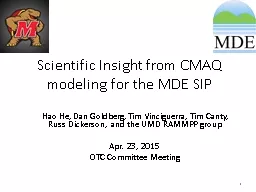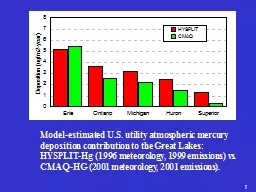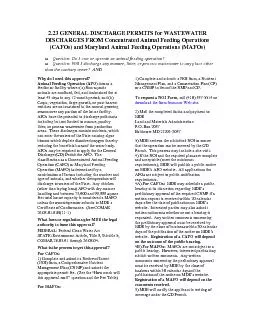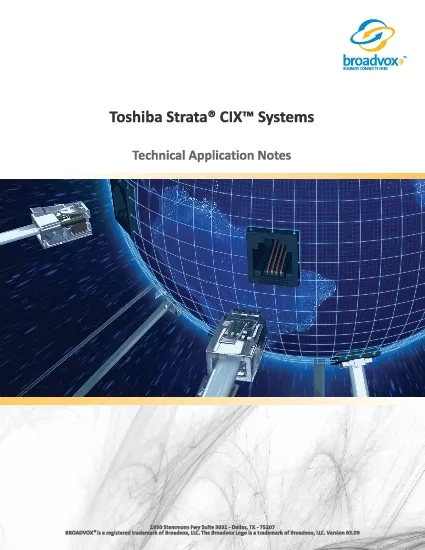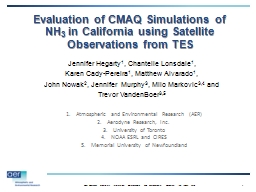PPT-Scientific Insight from CMAQ modeling for the MDE SIP
Author : trish-goza | Published Date : 2017-10-02
Hao He Dan Goldberg Tim Vinciguerra Tim Canty Russ Dickerson and the UMD RAMMPP group Apr 23 2015 OTC Committee Meeting 1 Beta Chemistry 2 Problem 1 In standard
Presentation Embed Code
Download Presentation
Download Presentation The PPT/PDF document "Scientific Insight from CMAQ modeling fo..." is the property of its rightful owner. Permission is granted to download and print the materials on this website for personal, non-commercial use only, and to display it on your personal computer provided you do not modify the materials and that you retain all copyright notices contained in the materials. By downloading content from our website, you accept the terms of this agreement.
Scientific Insight from CMAQ modeling for the MDE SIP: Transcript
Download Rules Of Document
"Scientific Insight from CMAQ modeling for the MDE SIP"The content belongs to its owner. You may download and print it for personal use, without modification, and keep all copyright notices. By downloading, you agree to these terms.
Related Documents

